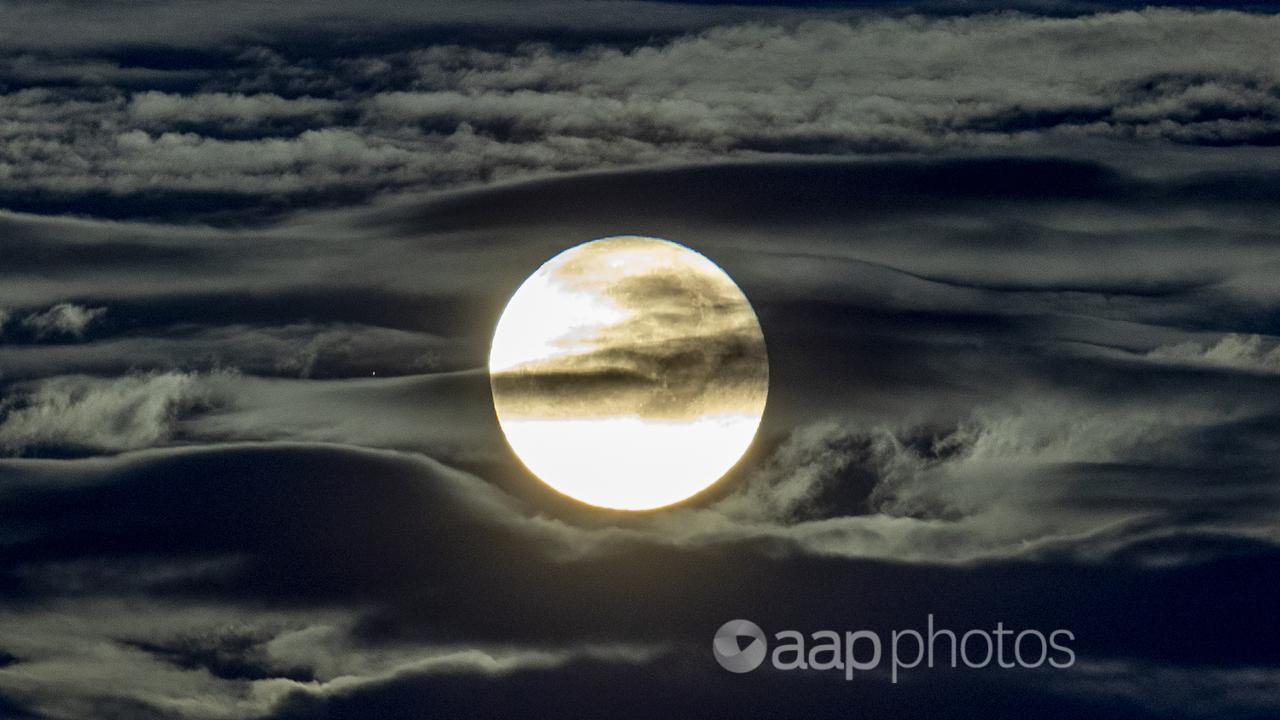A Facebook video from a flat-earth page attempts to debunk solar eclipses by claiming the moon gives off its own light.
The claim was made in a 2020 video post and an increasing number of fundamentalist Christian groups are buying into flat-earth theories (see here, here and here).
But physicists have dismissed the video’s theories, affirming the moon is not “its own light source” but reflects sunlight, and a small amount of light from the earth.
The narrator of the video, which has more than 200,000 views, makes the claim to rebuff arguments that eclipses prove the earth is round.
“What a lot of people don’t realise is that the moon gives off its own light as well. This can be proven by the fact that moonlight is measurably colder than sunlight. For example, take a thermometer out on a cloudless night and the temperature will actually be warmer in the shade than in the moonlight, which is the opposite of what we experience during the day. If the moon was reflecting the light of the sun, this would not be the case,” he says (video mark 1min 16sec).
Danny Faulkner, a physicist who works as a researcher for fundamentalist Christian group Answers In Genesis, has written in a journal article that the flat-earth phenomenon has grown in recent years and made inroads into the Christian community.
He traces the argument about the cool light of the moon to flat-earther Eric Dubay‘s 2014 book The Flat Earth Conspiracy, which says on page 79: “The Sun’s light is golden, warm, drying, preservative and antiseptic, while the Moon’s light is silver, cool, damp, putrefying and septic.”
However, experts say direct moonlight can seem cooler because heat is lost quicker in the open at night than in covered areas.
While the moon appears mostly white or light grey to the naked eye when illuminated, it’s surface is actually dark.
University of Melbourne physics professor Rachel Webster told AAP FactCheck the moon is only visible because it reflects sunlight.
Prof Webster also said it was colder in moonlight because the moon reflects a fraction of the sunlight it receives, and only some of that reaches earth.
“The moon has a darkside and a brightside … If the moon was a light source then all parts of it would glow not just the side facing the sun. Then we wouldn’t have phases of the moon,” she said in an email.
Prof Webster referred to Earthshine, which is sunlight reflected off the earth and then reflected off the dark side of the moon.
In an ABC report on Earthshine research, astrophysicist Sally Langford says it is seen as a pale glow in the darkened portion of the crescent moon.
University of Sydney physicist Michael Wheatland also confirmed to AAP FactCheck the moon is not its own light source.
“The light from the moon is reflected sunlight (and a tiny amount of light reflected from the earth),” Professor Wheatland said in an email.
“The moon radiates due to its temperature, but this will be in the infrared, and it will be a very small effect.
“It is not ‘colder in moonlight than in the shade’. However, if something is open to the night sky it will lose heat more rapidly than if it is in the shade, since the object forming the shade will be radiating thermally towards it. That has nothing to do with the moon.”
US astronomer Neil deGrasse Tyson addresses the question of why moonlight isn’t warm in this Facebook video.
He says: “Do you know how reflective the moon is? The moon is only reflecting not much more than 10 per cent of the sunlight that hits it. The rest is getting absorbed” (video mark 2min 10sec).
The Verdict
The claim that the moon is a source of its own light is false. Experts say the moon reflects sunlight but only a fraction of what it receives.
It is also not true that moonlight is colder than shaded areas at night.
False – The claim is inaccurate.
* AAP FactCheck is an accredited member of the International Fact-Checking Network. To keep up with our latest fact checks, follow us on Facebook, Twitter and Instagram.
All information, text and images included on the AAP Websites is for personal use only and may not be re-written, copied, re-sold or re-distributed, framed, linked, shared onto social media or otherwise used whether for compensation of any kind or not, unless you have the prior written permission of AAP. For more information, please refer to our standard terms and conditions.


















